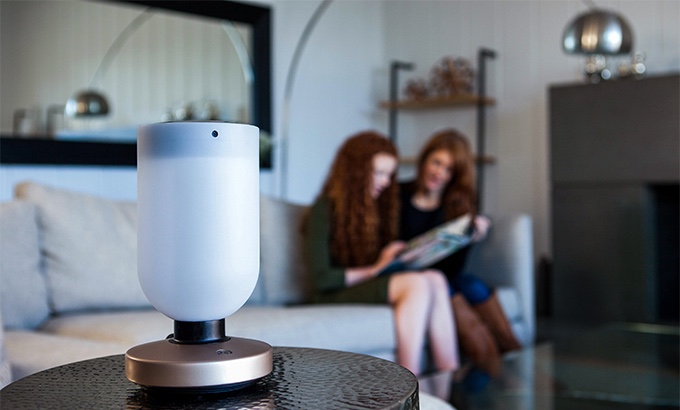
It’s a lot of functionality to put into a single device. In addition to motion sensors, the lamp’s base will have smoke, CO2, temperature, and humidity sensors. The Momo also boasts microphones and speakers.
“Momo voice activation is independent and onboard (not cloud),” Edoardo Scarso, founder and CEO of Morpheus, told Digital Trends. It will be able to recognize voice commands but not reply — at the moment. The artificial intelligence would allow the lamp to learn your habits over time and react accordingly.
“This means that when Momo has learned an activity the user performs with a certain degree of consistency, they will suggest the ‘automation,’” said Scarso. “To simplify, it may be turning on the kitchen light in the morning, and then the electric kettle. This combination of events at a regular time on Mondays to Fridays creates a behavior.”
The lamp also has gesture control, which we tried out during a demo of a prototype of the Momo. It wasn’t a demo of all the features — artificial intelligenc eand voice control were absent — but the gesture control worked pretty well. Put your hand over the top, and then raise or lower it to either brighten or dim the light. The LED bulb can also change colors. The entire lamp also swivels for more camera coverage, and you can physically block it for privacy.
With an eventual price tag of $699 — it’s currently available on Kickstarter for an early-bird price of $279 — the Momo is far more expensive than something like the $199 Netatmo, which is a facial-recognition camera, which can’t act as a hub and doesn’t have CO2, temperature, or humidity sensors. The problem with an all-in-one device is that while it can perform countless functions, it can only cover one room in the house. That’s a lot to shell out for one-room coverage.
As with any crowdfunding campaign, it’s backer beware. The Momo is an ambitious piece of hardware with a lot of features. Though we saw a prototype at the demo, we didn’t get to look at the complete product, which is supposed to ship in October of this year.
Updated 5/15/2017: Updated to clarify information about Netatmo.


